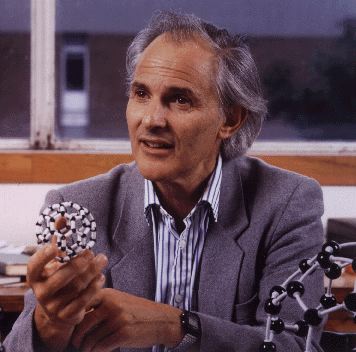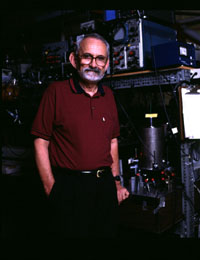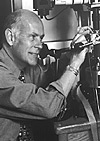


Prof. Sir H. W. Kroto
University of Sussex,
Britain.
Robert F. Curl, Jr
Rice University,
USA.
Richard E. Smalley
Rice University,
USA.
The discovery of C60 was mainly down to the following three men,
|
|
|
|
|
Prof. Sir H. W. Kroto |
Robert F. Curl, Jr |
Richard E. Smalley |
Each of these men received the Nobel prize for chemistry in 1996 for their work in the discovery of C60.
The first discovery was in 1985, when microscopic amounts of C60 and other related fullerenes were picked up on a very sensitive laboratory instrument. The amount produced was extremely small, and even if the machine was left on for ten years there would barely be enough to line the bottom of a test tube! Therefore the C60 could not be purified or analyzed.
Not till 1990 did the next breakthrough come, when independently, both the American and British groups showed that C60 could be made into gram quantities using a carbon arc. This can produce as much as 10% C60 and 1% C70.
Research into these larger quantities found that the fullerenes are soluble in solvents such as benzene, toluene or chloroform. This gives coloured solutions as shown below,

If you take a drop of a C60 solution and place it under a microscope the solvent evaporates and crystals appear. The crystals are made up of millions and millions of balls packed together, forming a beautiful picture, (see Home page).